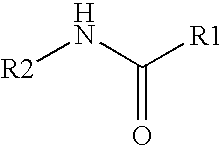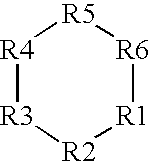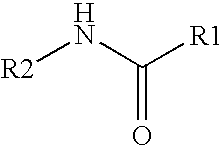Use of Hypothermia Inducing Drugs
a technology of inducing drugs and compounds, which is applied in the field of compounds for inducing hypothermia, can solve the problems of brain damage or death, unconsciousness, serious infections, and lung puncture, and mechanical inducers of hypothermia have been shown to have considerable unwanted side effects
- Summary
- Abstract
- Description
- Claims
- Application Information
AI Technical Summary
Benefits of technology
Problems solved by technology
Method used
Image
Examples
example 1
Cardiac Arrest
[0135]A 57-year-old woman is taken care of by the ambulance staff that finds her in ventricular fibrillation approximately 5 minutes after having collapsed without warning. The patient is immediately defibrillated and spontaneous circulation and ventilations occurred. On arrival to the hospital, 21 minutes after having collapsed, the patient has a palpable pulse. Staff at the emergency room has been alerted in advance. The patient is evaluated and the physician in charge decides that the patient shall receive hypothermia therapy immediately to minimize the risk of damage to the brain. A subcutaneous or intravenous bolus injection of a compound of this invention is administered. The dose will likely be in the interval 0.01 mg / kg to 80 mg / kg.
[0136]The purpose of hypothermia therapy is to lower the patient's core body temperature to 32-34 degrees Celsius for 12-24 hours (current American Heart Association recommendation). Depending on the individual's response to the medi...
example 2
Cardiac Arrest
[0138]A 22-year-old male athlete collapses when doing sports. Medical staff finds ventricular fibrillation / ventricular tachycardia approximately 6 minutes after collapse. He is successfully defibrillated and the patient is rushed to the hospital. In the ambulance, the physician present in the ambulance team decides that the patient shall receive hypothermia therapy immediately to minimize the risk of damage to the brain. A subcutaneous or intravenous bolus injection of a compound of this invention is administered. The dose will likely be in the interval 0.01 mg / kg to 80 mg / kg.
[0139]The purpose of hypothermia therapy is to lower the patient's core body temperature to 32-34 degrees Celsius for 12-24 hours (current American Heart Association recommendation). Depending on the individual's response to the medication 1-8 additional bolus injections may be required.
[0140]At the hospital, concurrent treatments and examinations are not influenced by the administration of the hy...
example 3
Cardiac Arrest
[0141]A 66-year-old man is undergoing elective heart surgery. He suffers from irregular cardiac rhythm during the procedure and goes into cardiac arrest with much impaired circulation for 6 minutes after which the surgical team manages to restore circulation. Subsequent to restoration of circulation, the surgeon in charge decides that the patient shall receive hypothermia therapy immediately to minimize the risk of damage to the brain. A subcutaneous or intravenous bolus injection of a compound of this invention is administered. The dose will likely be in the interval 0.01 mg / kg to 80 mg / kg.
[0142]The purpose of hypothermia therapy is to lower the patient's core body temperature to 32-34 degrees Celsius for 12-24 hours (current American Heart Association recommendation). Depending on the individual's response to the medication 1-8 additional bolus injections may be required.
[0143]At the hospital, concurrent treatments and examinations are not influenced by the administr...
PUM
| Property | Measurement | Unit |
|---|---|---|
| Time | aaaaa | aaaaa |
| Time | aaaaa | aaaaa |
| Mass | aaaaa | aaaaa |
Abstract
Description
Claims
Application Information
 Login to View More
Login to View More - R&D
- Intellectual Property
- Life Sciences
- Materials
- Tech Scout
- Unparalleled Data Quality
- Higher Quality Content
- 60% Fewer Hallucinations
Browse by: Latest US Patents, China's latest patents, Technical Efficacy Thesaurus, Application Domain, Technology Topic, Popular Technical Reports.
© 2025 PatSnap. All rights reserved.Legal|Privacy policy|Modern Slavery Act Transparency Statement|Sitemap|About US| Contact US: help@patsnap.com



